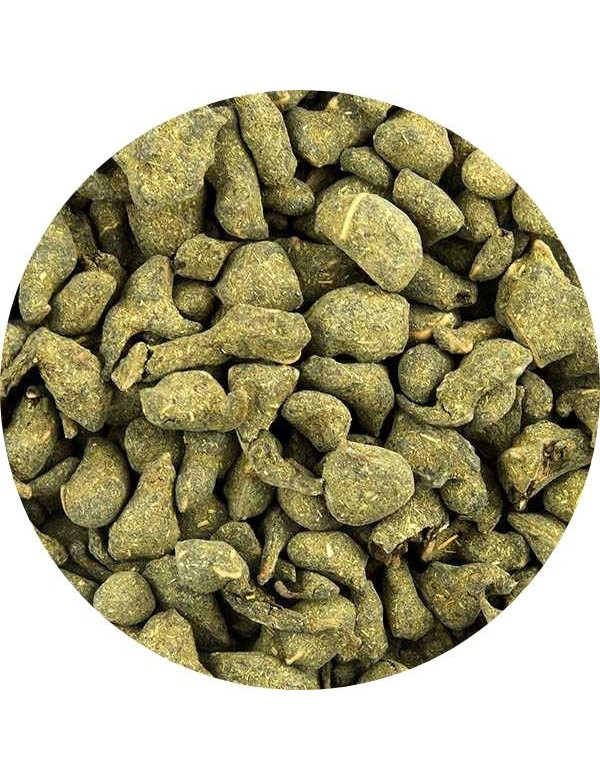



Lan Gui Ren, (The Queen Orchid or Ginseng Oolong) is a unique blend of ground ginseng and liquorice grass, compressed with oolong tea leaves creating a distinctive chameleon of flavor, shifting across multiple steeps
Considered a relatively modern tea variety, however, the combination of tea and ginseng is ancient as time and is of great help to increase bone mass and bone strength, reducing the likelihood of injury. Contains anti-inflammatory properties
It has a floral aroma, reminiscent of fresh orchids with an invigorating woody flavor and a lingering sweet aftertaste.
How to prepare:
quantity: 12 g/l (3g per cup)
temperature: 80 to 85 C
brewing time: 3 minutes
Multiple infusion: can hold 2 to 3 steeps
Food pairing: chocolate, caramels, spiced breads and pastries, even cheese

Security policy

Delivery policy
It became a royal drink 500 years ago and was served as a tribute tea to the emperor, also called "king's tea" or "Orchid Beauty" which refers to an emperor's concubine in the Tang Dynasty
Ginseng
Ginseng is well-known for its roots, which look very similar to ginger.
It has long been used in traditional medicine in several Asian and Native American cultures.
Asian ginseng is also known as Panax ginseng. It is cold-resistant and can be up to 8 inches tall. Today, Asian ginseng is mostly found in the remote mountains of Korea, China, and Russia.
Panax, ginseng’s genus name derives from the Greek word panacea.
The American ginseng was used by the Iroquois and Mohegans as a fertility drug, painkiller, anti-emetic, and psychiatric drug.
In Asia, it is used for treating colds and fatigue. It also promotes stamina, strength, concentration, and memory. It is said to relieve anxiety, hot flashes, and respiratory disorders as well as slow down the ageing process.
Liquorice
Liquorice, also known as Glycyrrhiza, is a flowering perennial growing up to 5 feet (1.5 m) tall, which is native to Eurasia.
Glycyrrhiza comes from the Ancient Greek words: glykys and rhiza, meaning “sweet” and “root”.
Licorice root has been a popular remedy for a long time and has been used in ancient herbal medicine in China, Egypt, as well as Central Europe.
It’s also used as a sweetener, as it is 50 times sweeter than sugar!
The plants are harvested by digging up the roots and either squeezing their juice, which is then boiled down to an extract or by simply drying the roots, which can then be either milled into powder or boiled in water.
TIP for brewing "Asian style" or "Gong-fu"
Steep 6 grams (2 tablespoons) in 150 ml water at 80 C for approximately 20-30 seconds. Infuse 6-8 times and add 5-10 seconds for each consecutive re-steep.